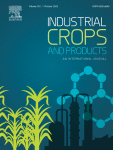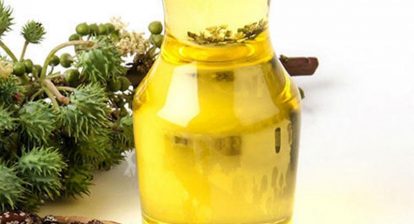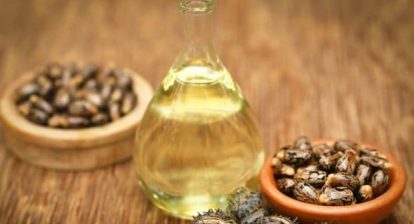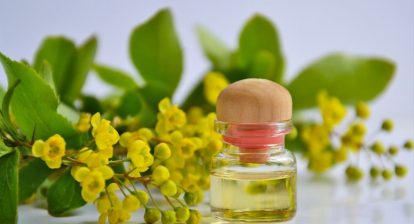The castor bean contains approximately 50% of its weight in oil, which can be extracted by several processes and is an excellent raw material source. This extracted oil is rich in a specific fatty acid called ricinoleic acid. The amount of this acid in the oil is between 80% and 90%, giving this oil singular characteristic (Chen et al., 2017, Dias et al., 2013, Figueiredo et al., 2009). Castor oil cracking consists of breaking molecules, ricinoleic acid as the main one, which is more predominant, into smaller ones that can be used in the green chemistry industry (Botton et al., 2016). In this process, bio-oil is a significant phase, representing, in most cases, approximately 75% of the products generated. This fraction has the highest energy potential. Two parameters to obtain it must be analyzed: the cracking temperature and the residence time. Finding alienated intermediate temperatures with appropriated residence times provides an excellent formation of bio-oil (Bridgwater, 2012).
Mutlu and Meier (2010) developed a study on castor oil as a renewable resource for the chemical industry. They present several chemical processes, the most prominent of which is cracking. They emphasize that cracking occurs above 400 °C and this causes the cleavage of castor oil molecules to form ricinoleic acid and glycerol. In turn, the hydroxyl group of the ricinoleic acid molecule is divided, forming heptaldehyde and undecylenic acid. These compounds have great importance. Therefore, maximizing their production of them is interesting for the green chemical industry. There is also the formation of light gases and a residue composed of methyl esters and free fatty acids (Fig. 1).
Botton et al. (2016) present the production of heptaldehyde and undecylenic acid through the processing of methyl ricinoleate by the thermal cracking technique. While carrying out the experiments, the author proposed an experimental matrix varying the operating temperature from 475 °C to 525 °C and the mass flow rate of raw material from 100 to 300 g/h to determine the best yield obtained. Using a screw reactor in continuous mode and atmospheric pressure, the author observed the production of the compounds aimed by the study. However, the condition under which methyl undecylenate presented the best results was at a temperature of 525 °C with a mass flow rate of 294.8 g/h and yield of 21.36%. Heptaldehyde, on the other hand, presented a yield of 27.93% at a temperature of 500 °C and a flow rate of 100.25 g/h.
Wetroff et al. (1957), Idem et al. (1996), Guobin et al. (1996), and Hu et al. (2000) reported that the use of water reduces the intensity of cracking, leading to a higher yield of liquids and lesser formation of secondary compounds, such as non-condensable gases. Other benefits such as temperature homogenization and reduced coke formation were also reported. Costa et al. (2022) studied the production of green chemicals by thermal cracking of castor oil, methyl ricinoleate, and ricinoleic acid. The goal was to evaluate the production of heptaldehyde, undecylenic acid, and methyl undecylenate from the aforementioned raw materials in a bench-scale reactor. The equipment used was an endless screw reactor under the following operating conditions: raw material feed rate 300 g/h and water feed rate 100 g/h; temperature range from 530° to 575°C; at atmospheric pressure. Using castor oil as raw material, the temperature that presented the higher chemical production was 530 °C, producing 19.03% of heptaldehyde and 16.5% of undecylenic acid. For methyl ricinoleate, the best condition was 530 °C, with 20.7% of heptaldehyde and 23.8% of methyl undecylenate. Finally, when using ricinoleic acid at a temperature of 530 °C, the results found for heptaldehyde and undecylenic acid were 15.2% and 17.8%, respectively.
Das et al. (1989) used benzoyl peroxide as a cracking initiator and discussed its action via a free radical mechanism. When castor oil was subjected to pyrolysis containing 0.5% benzoyl peroxide at 550 °C, the outcome yielded 24.8% heptaldehyde and 36.0% undecylenic acid. Abdelfattah et al. (2018) conducted studies using castor oil to investigate the effects of varying the type of catalyst and its concentration on the bio-oil yield in different ranges of cracking temperature. Initially, the authors carried out the tests and observed that from the five catalysts used, the ones that presented the best bio-oil yield were sodium hydroxide (NaOH) and NaOH combined with a molecular sieve catalyst (ZSM-5). The authors performed the tests in the following settings: feeding rate ranging from 0.30 L/h to 0.1935 L/h; thermo-catalytic cracking temperature ranging from 233° to 347°C at atmospheric pressure. Under these conditions with 1% NaOH, they produced 91.7% pyrolytic product containing 24.04% heptaldehyde and 6.85% undecylenic acid. With 1% NaOH combined with ZSM-5, under the same pressure and temperature conditions, they obtained 68.2% of the pyrolytic product with 4.40% of heptaldehyde and 6.80% of butyl undecylenate.
The importance of heptaldehyde production is highlighted, as it has a broad industrial application, such as solvents, in the preparation of rubbers and plastics; emulsifiers and plasticizers; use in the preparation of vulcanization accelerators; in the manufacture of alcohols; and in the manufacture of aromas for the production of perfumery (Vishwanadham et al., 1995). Among the characteristics presented by heptaldehyde, it is an oily liquid, miscible in alcohol and oils, slightly soluble in water, and with a rancid odor. It has a fruity aroma and a harsh taste in high concentrations, similar to chestnuts and almonds. This aldehyde is found in perfumeries, mainly to mask strong odors (Arctander, 1994). Some perfumery chemicals from heptaldehyde derived from castor oil are amyl connamic aldehyde; heptanol; methyl nonenoate; heptyl heptanoate; methyl hexylketone; dihydrojasmone; gamma-nara lactone (Nagaraj, 2009).
The relevance of the production of undecylenic acid is that it is a sustainable material used in chemical synthesis to manufacture polymers, aromas, flavors, and pharmaceutical products (Nie et al., 2015). Undecylenic acid is a castor oil derivative that is very popular in perfumery. Due to its actions as a disinfectant agent and fungicidal and bactericidal properties, this acid is widely used in skin and hair care products. Some chemical products used in perfumery are methyl and ethyl; aldehydes; alcohols; 12-oxa-16-hexadecanolide; muskone; undecalactone. However, it also has applications in manufacturing polymers such as nylon-11 and nylon-10 (Nagaraj, 2009).
The concept of green and sustainable chemistry is the use of chemistry and chemical engineering in different principles that can be obtained when thinking about the design, development, and implementation of products and industrial processes, making professionals protect and benefit the economy, people, and the environment, finding many ways to reduce, save and discover green substitutes (ACS, 2021).
Obtaining chemical precursors of non-edible vegetable oils, as in the case of castor beans, stands out within green and sustainable chemistry. With these precursors, it is possible to obtain cosmetics, flavorings, essences, pharmaceuticals, and other chemicals (Chiarello et al., 2022, Menshhein et al., 2019a). The main goal of this work was to evaluate the influence of conditions (water, catalyst, and temperature) in improving the yield of heptaldehyde and undecylenic acid production in cracking from castor oil.







